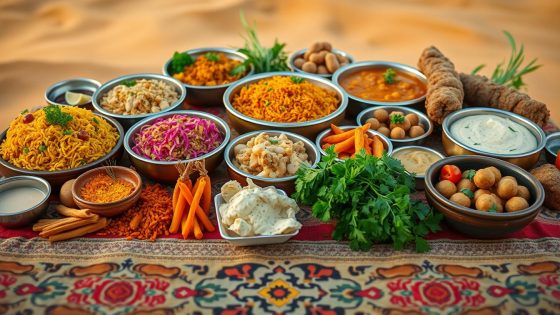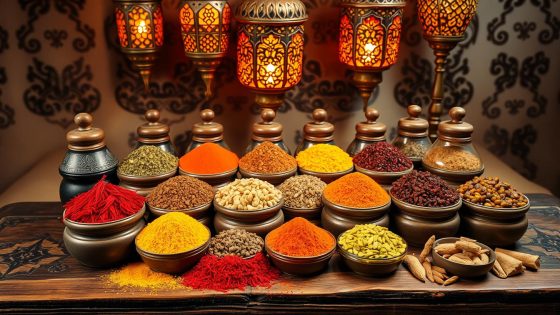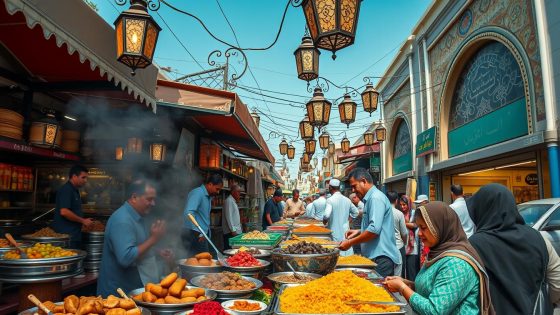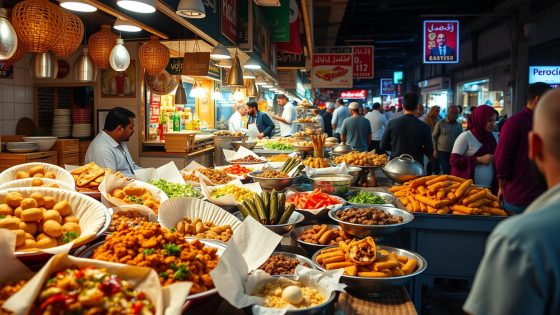Contents
Welcome to our culinary guide to UAE’s regional cuisines! The United Arab Emirates has evolved from a land of celebrity chef restaurants to a hub of diverse, homegrown eateries. This shift has brought local specialties and regional dishes to the forefront, creating a vibrant food scene that’s uniquely Emirati.
Once dominated by international flavors, Dubai’s culinary landscape now showcases the rich tapestry of local ingredients. Restaurants like Boca in Dubai’s Financial District have pioneered the use of produce from all seven emirates. From Dibba Bay oysters in Fujairah to kingfish from the Arabian Gulf, these eateries are redefining UAE’s food identity.
The pandemic sparked a desire to support local restaurants, leading to a boom in high-quality, homegrown establishments. Chefs like Omar Shihab, Shaw Lash, and Salam Daqqaq are at the forefront of this movement, crafting modern interpretations of traditional recipes using regional ingredients. This guide to UAE’s regional cuisines will take you on a flavorful journey through the emirates, exploring the unique tastes and techniques that make up this exciting culinary scene.
Overview of UAE’s Culinary Diversity
The United Arab Emirates boasts a rich tapestry of culinary traditions, reflecting its diverse population and cultural heritage. With a population of 9,257,000 in 2024, the UAE’s food regions showcase a blend of Bedouin, Persian Gulf, and farming influences. This regional food guide explores the nation’s cooking styles and culinary diversity.
Key Regions and Their Unique Flavors
Each emirate contributes distinct flavors to the UAE’s gastronomic landscape. Coastal areas like Ras Al Khaimah, once a powerful maritime emirate, offer seafood specialties. Inland regions such as Al Ain, a UNESCO World Heritage Site dating back to 6000 BC, are known for date-infused dishes. This diversity in food regions creates a vibrant culinary scene across the country’s 71,024 square kilometers.
| Emirate | Culinary Specialty | Historical Influence |
|---|---|---|
| Dubai | International fusion | Modernization since 1958 |
| Abu Dhabi | Desert cooking techniques | Bedouin traditions |
| Sharjah | Traditional bread-making | Vital trading port since 16th century |
| Fujairah | Agriculture-based dishes | Eastern coast location |
Influence of Local Ingredients on Regional Dishes
Local ingredients play a crucial role in shaping UAE’s regional dishes. Chefs embrace indigenous produce like khansour, a mountain plant, and locally sourced fish to create authentic flavors. Traditional dishes such as Machbous, Harees, and Maq’louba showcase the use of local spices and cooking methods. This emphasis on regional ingredients not only preserves culinary heritage but also promotes sustainability in the UAE’s food culture.
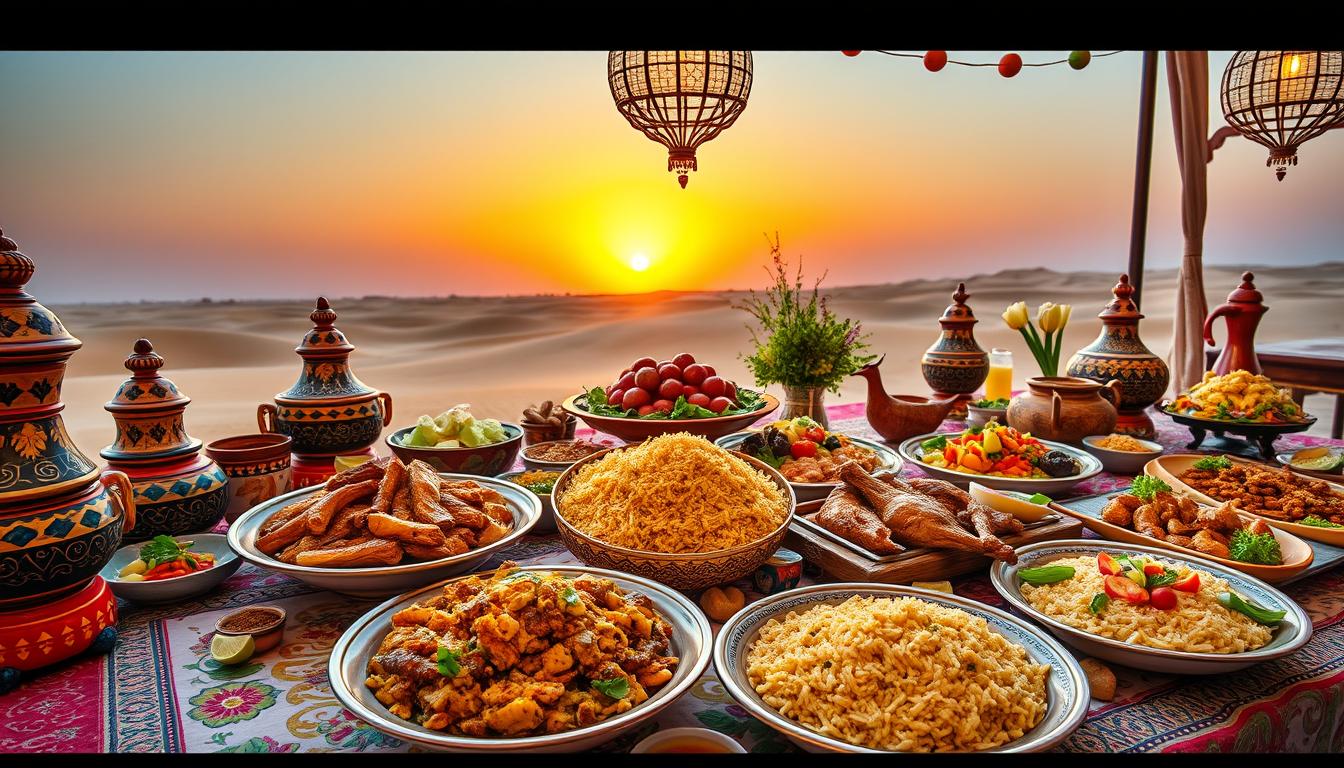
Northern Emirate Specialties
The northern emirates of the UAE offer a rich tapestry of regional flavors and cuisine types. From seafood delicacies to traditional lamb dishes and unique bread-making traditions, these areas showcase the diversity of Emirati culinary heritage.
Seafood Delights in Ras Al Khaimah
Ras Al Khaimah, the northernmost emirate, is a haven for seafood lovers. Its coastal location provides access to fresh catches from the Arabian Gulf. Local cooking methods often involve grilling or stewing fish with aromatic spices. A popular dish is the Samak Magli, where fish is marinated in a blend of local spices and grilled to perfection.
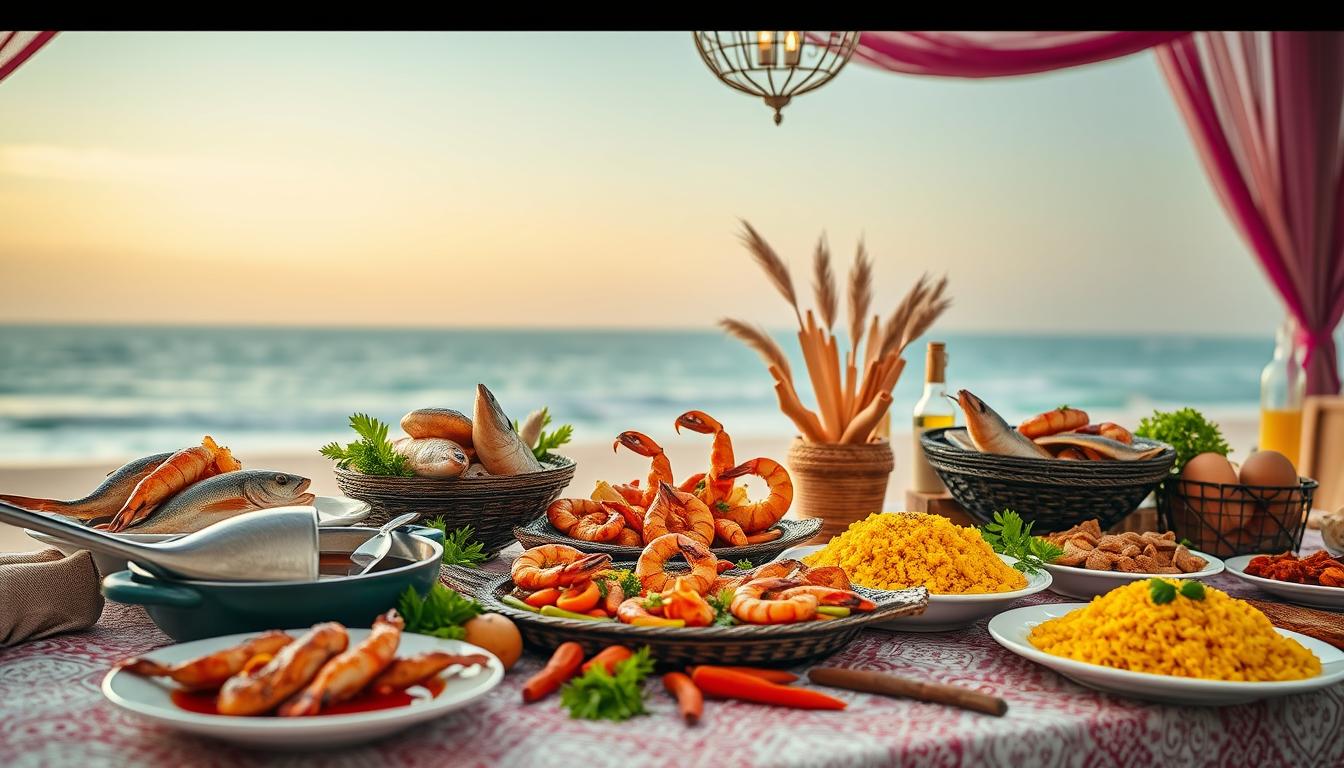
Lamb Specialties in Fujairah
Fujairah, known for its mountainous terrain, boasts traditional lamb recipes that reflect its rugged landscape. The emirate’s cuisine often features slow-cooked lamb dishes infused with local herbs. One such dish is the Thareed, a hearty stew where tender lamb is layered with crisp flatbread and vegetables.
Sharjah’s Bread-Making Heritage
Sharjah preserves a rich bread-making tradition that forms an integral part of its culinary identity. Local bakeries produce a variety of fresh breads daily, including the ubiquitous pita and regionally inspired flatbreads. The Khameer, a slightly sweet bread flavored with cardamom, is a beloved local specialty.
| Emirate | Signature Dish | Key Ingredient | Cooking Method |
|---|---|---|---|
| Ras Al Khaimah | Samak Magli | Fresh Fish | Grilling |
| Fujairah | Thareed | Lamb | Slow-cooking |
| Sharjah | Khameer | Flour, Cardamom | Baking |
These northern emirates exemplify the UAE’s diverse culinary landscape, seamlessly blending traditional recipes with modern interpretations. Each region’s unique geography and cultural influences shape its distinctive cuisine, offering food enthusiasts a rich array of flavors to explore.
Central UAE Cuisine
Central UAE’s culinary landscape is a rich tapestry of flavors, blending traditional meals with modern interpretations. Food mapping reveals a diverse array of local specialties that reflect the region’s unique geography and cultural heritage.
Date-infused Dishes from Al Ain
Al Ain, known for its abundant date palms, infuses this sweet fruit into many regional dishes. Dates are a staple in Emirati cuisine, often paired with ingredients like saffron, cardamom, and rose water. These flavors come together in popular desserts and savory meals alike, showcasing the versatility of this local treasure.
Desert Cooking Techniques of Abu Dhabi
Abu Dhabi’s culinary scene incorporates traditional desert cooking methods, reflecting its inland geography. One beloved dish is makbūs, featuring poultry, meat, or fish served on a bed of spiced rice with dried lime. Lamb and chicken are preferred meats, often slow-cooked to perfection using time-honored techniques.
Popular Meals in Rural UAE Regions
Rural areas of the UAE offer a glimpse into authentic Emirati food culture. These regions preserve traditional meals that are gaining recognition in urban areas. Restaurants like Gerbou in Dubai showcase modern takes on classic dishes, such as machboos with local chicken and tomato pickles. Chefs like Sahar Parham Al Awadhi are leading the charge in reinventing Emirati flavors, blending them with Indian, Levantine, and Mediterranean influences.
| Region | Signature Dish | Key Ingredients |
|---|---|---|
| Al Ain | Date Pudding | Dates, Cardamom, Rose Water |
| Abu Dhabi | Makbūs | Spiced Rice, Meat, Dried Lime |
| Rural UAE | Machboos | Chicken, Rice, Tomato Pickles |
Coastal Influences on UAE Cuisine
The UAE’s coastal regions have shaped its culinary landscape, creating a unique blend of flavors and cooking methods. This regional culinary guide showcases how maritime trade and local ingredients have influenced the country’s food culture.
Fresh seafood and grilled fish dishes
Coastal cities like Dubai offer a variety of seafood options. Dibba Bay Oyster Farm, for example, brings locally sourced oysters to the city’s dining scene. Grilled fish dishes are popular, reflecting the abundance of fresh catches from the Arabian Gulf.
Coastal spice blends and marinades
UAE’s coastal cuisine features distinctive spice blends and marinades. These flavors are a result of centuries of trade and cultural exchange. Restaurants like TakaHisa in Dubai showcase this fusion by combining Japanese techniques with local ingredients, creating unique regional flavors.
Impact of maritime trade on culinary practices
Maritime trade has significantly influenced UAE’s food regions. It has introduced new ingredients and cooking techniques, enriching the local culinary landscape. This impact extends beyond seafood, shaping the overall food culture of the UAE. As coastal megacities continue to grow, with an estimated doubling of population within 200 km of the coastline in the next three years, we can expect further evolution in coastal culinary practices.
